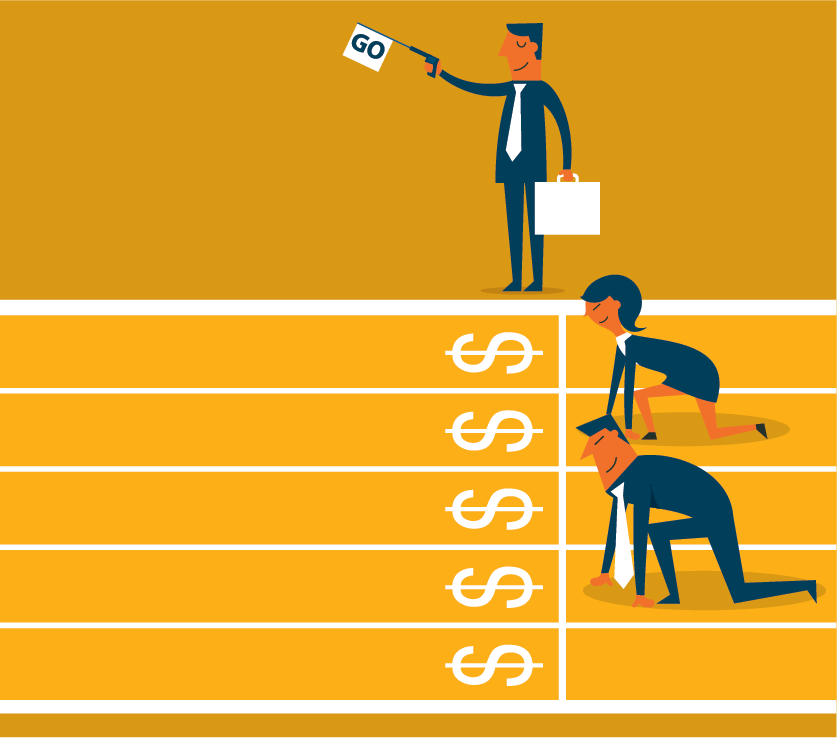The chasm between male and female athletes’ remuneration is a multifaceted issue. It is heavily influenced by societal stereotypes, media representation, and systemic inequities. This discourse critically examines the origins of this disparity, the role of media in perpetuating it, and the projected timeline for achieving pay parity, substantiated by empirical data.
Historically, sports have been perceived as a male-dominated arena, with societal norms relegating women to passive roles. Such gendered stereotypes have been instrumental in marginalizing female athletes, often questioning their competence and undermining their achievements. From a young age, boys are encouraged to pursue athleticism, with physical ability celebrated as a marker of masculinity. Meanwhile, girls are frequently dissuaded from competitive sports, particularly those deemed “male” due to their association with brute strength and physicality, such as rugby or football.
While progress has been made in breaking down these stereotypes, they continue to influence participation rates especially in these quintessentially “masculine” sports. The argument often cited is rooted in biological differences—men, on average, are physically stronger than women. Yet this reasoning should not deter female participation or interest in these sports. The entertainment value of watching women compete is not diminished by physiological differences; in fact, fans frequently celebrate the skill, strategy, and determination displayed by female athletes. People enjoy watching women’s teams win, as seen in the record-breaking viewership of tournaments like the 2022 UEFA Women’s European Championship.
The underrepresentation of women in sports like football and rugby stems largely from systemic neglect rather than a lack of demand or entertainment value. Participation rates remain low because societal biases still funnel resources, training opportunities, and media attention disproportionately toward men. This creates a self-perpetuating cycle: fewer girls play these sports due to a lack of visibility and support, which then reinforces stereotypes that these sports are “not for women.” Addressing these disparities requires not only challenging societal norms but also creating pathways for greater participation and recognition of women in all areas of sport.
The media serves as a strong conduit in shaping public perception and interest in sports. Regrettably, female sports receive a disproportionately low amount of coverage compared to their male counterparts. According to research by the Women’s Sport Trust, women’s sports constituted a mere 13% of sports coverage hours on key sports channels in 2022. This imbalance reflects a systemic undervaluation of women’s sports, which in turn discourages sponsors and advertisers from investing in female athletes or teams.
In football, for instance, men’s competitions like the FIFA World Cup or the UEFA Champions League dominate global viewership and advertising budgets. By contrast, the Women’s World Cup—despite breaking records with 1.12 billion viewers in 2019—is still overshadowed in terms of promotion and financial rewards. The prize pool for the 2022 men’s FIFA World Cup stood at $440 million, compared to just $110 million for the 2023 Women’s World Cup—a disparity of 300%.
This lack of visibility not only diminishes the commercial appeal of women’s sports but also perpetuates the narrative of female athletes being less competent or entertaining. A 2021 study found that only 5% of sports programming was devoted to women’s events, while male sports dominated 95% of airtime. This imbalance fosters another vicious cycle whereby without visibility, female athletes struggle to attract sponsorships and funding, thus limiting their opportunities to compete at the highest level.
Despite historical underrepresentation, recent data indicates a positive shift in viewership of women’s sports. The Women’s Sport Trust reported that the average viewer watched eight hours and 44 minutes of women’s sports in 2022, more than double the three hours and 47 minutes recorded in 2021. Furthermore, 84% of general sports fans expressed interest in women’s sports, with 51% of them being male, highlighting a growing and diverse audience base.
Women’s football, in particular, has seen a surge in popularity. The 2022 UEFA Women’s European Championship final drew 17.4 million viewers in the UK, making it the most-watched women’s football match in history. Similarly, the National Women’s Soccer League (NWSL) in the United States reported a 70% increase in viewership between 2020 and 2022. These trends suggest that when given visibility and investment, women’s sports can generate significant interest.
However, this growing audience has yet to translate into equal financial rewards. While sponsorship deals for female athletes are increasing, they remain paltry compared to the sums offered to male athletes. For example, the highest-paid female athlete in 2024, Coco Gauff, earned $34.4 million—a remarkable sum, yet only a fraction of Cristiano Ronaldo’s $260 million earnings that same year.
Notwithstanding the increase in viewership, the financial remuneration of female athletes remains disproportionately low. The disparity is particularly egregious in team sports like basketball, football, and cricket. For instance, the collective earnings of the USA men’s basketball team amount to $2.5 billion, whereas the women’s team has earned a mere $9.3 million—a 269-fold disparity.
The situation is equally dire in cricket. The total prize money for the 2022 ICC Men’s Cricket World Cup was $10 million, compared to just $3.5 million for the Women’s Cricket World Cup in the same year. Even in tennis, where women have made significant strides toward equality in Grand Slam prize money, disparities persist in sponsorships and endorsement deals. Male players continue to dominate lucrative advertising campaigns, often earning double or triple the amounts secured by their female peers.
Achieving financial parity in sports is a slow and challenging process, hindered by deeply entrenched inequalities. Even if women secured a larger percentage of revenue from their sports, the absolute amounts would remain far smaller than men’s earnings. For example, 20% of $5 million for women’s football is only $1 million, while 10% of $1 billion in men’s football would still yield $100 million. This example highlights the systemic financial imbalance that persists even as women’s sports grow in popularity and profitability.
And whilst viewership and sponsorship of women’s sports are increasing, the scale of the gap is so vast that it will take decades to close. Current projections suggest that achieving financial equity in sports like football could take 30 years or more of sustained investment and growth. For female athletes competing today, this means they are unlikely to see parity within their careers.
Meanwhile, male athletes continue to benefit from their sports’ entrenched financial dominance. Larger sponsorship deals, higher advertising budgets, and prioritized broadcast schedules ensure that men’s leagues maintain their overwhelming revenue advantage. Women’s sports, on the other hand, are expected to compete with far less financial backing, creating a cycle – as mentioned before – of underinvestment that slows progress. Essentially, closing the gap will require significant and sustained commitment from governing bodies, sponsors, and media outlets to elevate women’s sports to the same level of visibility and commercial success as men’s. Without deliberate action, the inequity will remain entrenched, perpetuating an unjust system where female athletes are consistently undervalued for their talent and achievements
The gender pay gap in sports, as demonstrated above, is a manifestation of deep-seated societal biases and inequities. Addressing this issue necessitates a multifarious approach: challenging and redefining societal norms, ensuring equitable media representation, and implementing policies that promote financial equity.
While the path to parity is fraught with challenges, the burgeoning interest in women’s sports offers a beacon of hope. It is imperative for stakeholders—governing bodies, media, sponsors, and audiences—to collaborate in continuing to foster an environment where female athletes receive the recognition and remuneration commensurate with their talent and contributions. Only then can the world of sports truly embody the principles of fairness and equality it so often espouses.

